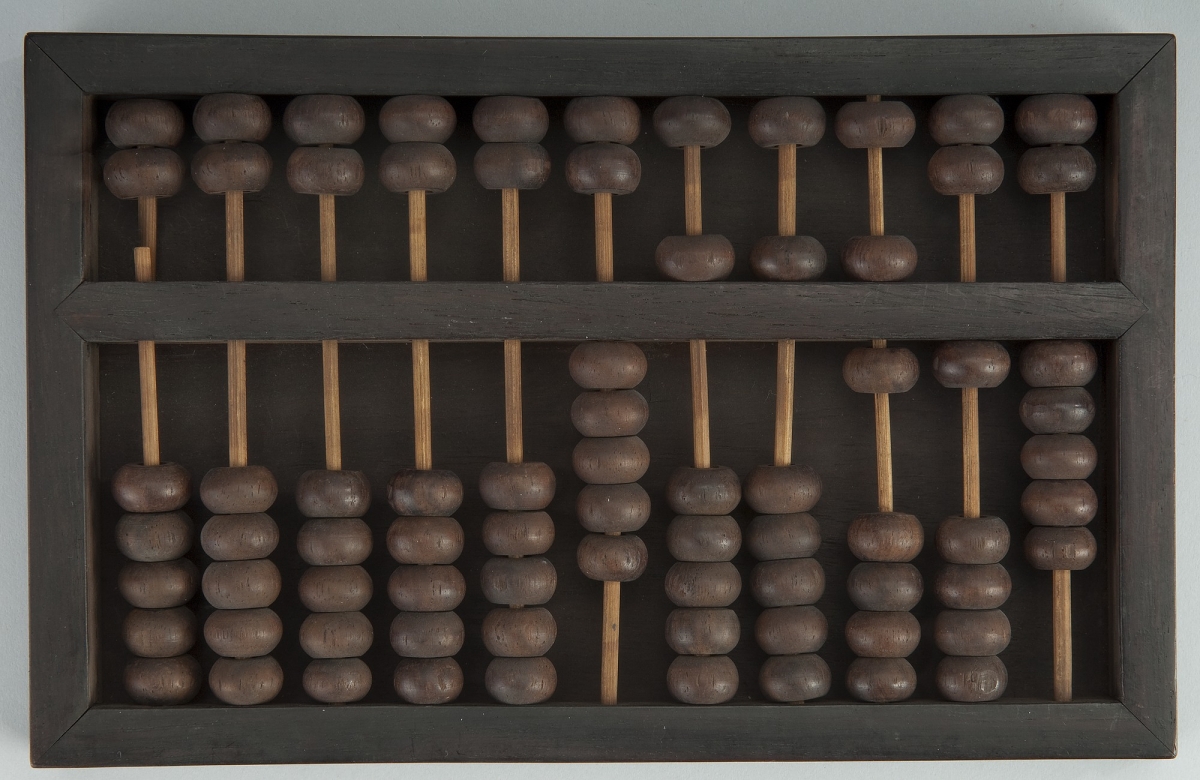- About MAA
- Membership
- MAA Publications
- Periodicals
- Blogs
- MAA Book Series
- MAA Press (an imprint of the AMS)
- MAA Notes
- MAA Reviews
- Mathematical Communication
- Information for Libraries
- Author Resources
- Advertise with MAA
- Meetings
- Competitions
- Programs
- Communities
- MAA Sections
- SIGMAA
- MAA Connect
- Students
- MAA Awards
- Awards Booklets
- Writing Awards
- Teaching Awards
- Service Awards
- Research Awards
- Lecture Awards
- Putnam Competition Individual and Team Winners
- D. E. Shaw Group AMC 8 Awards & Certificates
- Maryam Mirzakhani AMC 10 A Awards & Certificates
- Two Sigma AMC 10 B Awards & Certificates
- Jane Street AMC 12 A Awards & Certificates
- Akamai AMC 12 B Awards & Certificates
- High School Teachers
- News
You are here
Mathematical Treasure: Modern Chinese Abacus

Chinese Abacus, ca 1925, Smithsonian Institution negative number DOR 2010-0104.
The abacus is a computing device on which arithmetic calculations are performed by sliding counters (beads, pebbles, or flat discs) along rods, wires or lines. The instrument may have originated in the Middle East before the time of Christ. Small stones known as calculi, from the Greek khalix, pebble, were moved along lines drawn in stone or sand. Our modern terms “calculate” and “calculus” come from the term calculi, while the word “abacus” comes from a Greek word meaning a board or slab, or a calculating table.
The abacus has taken many forms over the centuries. In Medieval and Renaissance Europe, merchants commonly did calculating by moving wooden or metal counters along lines drawn on a wooden table known as counting board, a counter-board, or a reckoning-board. The term “counter” eventually came to refer not only to an object used in calculations but also to the place in a store where transactions are carried out.
By the eighteenth century, the abacus was well established in China and Russia. In the late nineteenth and early twentieth centuries, western scientists and mathematicians sometimes exhibited abaci as examples of eastern culture, This is one such abacus, from the mathematics department of Brown University. The beads on the rods in this abacus represent numbers in base ten, reading from right to left as 1s, 10s, 100s, etc., as in European notation. In the Chinese form of the instrument, two beads above the cross-bar each represent five and those below it represent one. Five can be represented by five one-beads brought up to the cross-bar or by one five-bead brought down. Thus, the abacus shown in the photograph represents the number 555,615. Final answers are usually represented by the smallest possible number of beads—five one-beads would be replaced by one five-bead.
This object and other abaci from the Smithsonian Institution’s National Museum of American History are shown at the website https://www.si.edu/spotlight/the-abacus-the-numeral-frame-and-counters.
Peggy A. Kidwell (National Museum of American History, Smithsonian Institution), "Mathematical Treasure: Modern Chinese Abacus," Convergence (August 2014)




